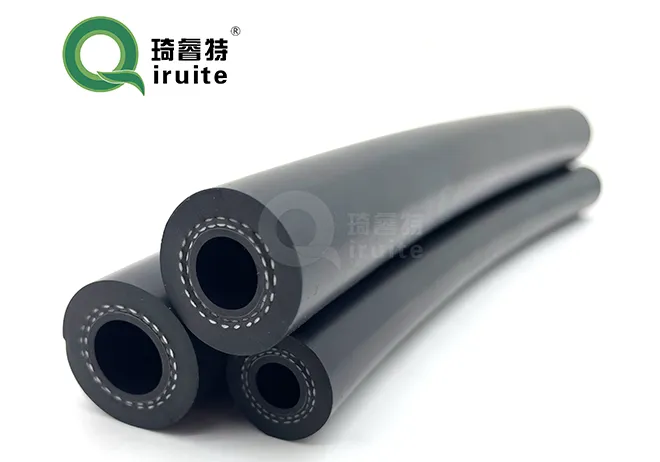different types of pipe couplings
Different Types of Pipe Couplings
Pipe couplings are essential components in plumbing, piping, and other fluid transfer systems. They serve the primary purpose of connecting two pipe ends together, facilitating smooth and secure flow while minimizing leakage. This article explores various types of pipe couplings, their functions, advantages, and applications in different industries.
1. Rigid Couplings
Rigid couplings are designed to permanently join two pipes, ensuring a solid and inflexible connection. These couplings are typically made of materials such as metal or durable plastics and are often used where high-stress resistance is needed. Common applications include water supply lines and heavy industrial piping systems.
Advantages - High strength and stability - Simple installation process - Minimal leakage potential when properly installed
Disadvantages - Limited ability to absorb misalignment or thermal expansion
2. Flexible Couplings
Flexible couplings allow for slight movements between connected pipes, accommodating thermal expansion, vibration, or misalignment. Made from materials like rubber or PVC, these couplings are versatile and frequently used in residential plumbing, HVAC systems, and drainage applications.
Advantages - Flexibility to absorb vibrations and movements - Easy to install and replace - Suitable for use in various applications
Disadvantages - May not provide the same level of strength as rigid couplings - Potential for wear and degradation over time
3. Compression Couplings
Compression couplings feature a mechanism that compresses a gasket around the pipe ends, creating a tight seal. These couplings are most commonly used in underground installations or areas where space is limited, such as in landscaping or irrigation systems.
Advantages - Quick installation without the need for soldering or welding - Minimal tools required for assembly - Effective in preventing leaks
Disadvantages - May require regular maintenance to ensure continued effectiveness - Susceptible to degradation from certain chemicals or environmental conditions
Slip couplings are designed to connect two pipes that are already in place. One end of the coupling slides over one pipe, while the other fits over the second pipe, allowing for easier alignment. They are ideal for repairing sections of piping or making adjustments.
different types of pipe couplings

Advantages - Simplified connection process for existing pipes - Enables adjustments or repairs without the need for extensive disassembly
Disadvantages - Not suitable for high-pressure applications - Can be less secure than other coupling types
5. Welded Couplings
Welded couplings are typically used in high-pressure and high-temperature applications, often found in industrial settings. These couplings are welded directly to the pipe ends, creating a strong, permanent bond. They are commonly employed in oil and gas industries, chemical processing, and steam systems.
Advantages - Very strong and durable connection - Resistant to high pressures and extreme conditions - Provides a leak-proof seal
Disadvantages - Requires specialized knowledge and equipment for installation - Inflexibility limits movement accommodation
6. Flanged Couplings
Flanged couplings connect two pipes using flanges and bolts, allowing for easy disassembly and maintenance. This type of coupling is prevalent in large piping systems, such as those used in water treatment plants and manufacturing facilities.
Advantages - Simple to assemble and disassemble - Allows for easy access for maintenance - Can withstand high pressure and temperatures
Disadvantages - Bulkier design may require additional space - More components can increase potential for leaks
7. Compression Fittings
While not technically couplings, compression fittings play a similar role by connecting pipes through a compression mechanism. These fittings are common in gas and water lines, especially where connections need to be quick and reliable.
Advantages - Fast installation process - Reliable sealing capability
Disadvantages - Limited ability to withstand extreme pressures
Conclusion
Understanding the various types of pipe couplings is critical for selecting the appropriate connection for specific applications. From rigid couplings providing strength and stability to flexible couplings accommodating movement, each type serves unique purposes within different industries. Proper installation and maintenance of these couplings ensure the efficiency and integrity of fluid transfer systems. As technology advances, newer coupling designs and materials continue to emerge, offering even greater performance and reliability.
-
Ultimate Spiral Protection for Hoses & CablesNewsJun.26,2025
-
The Ultimate Quick-Connect Solutions for Every NeedNewsJun.26,2025
-
SAE J1401 Brake Hose: Reliable Choice for Safe BrakingNewsJun.26,2025
-
Reliable J2064 A/C Hoses for Real-World Cooling NeedsNewsJun.26,2025
-
Heavy-Duty Sewer Jetting Hoses Built to LastNewsJun.26,2025
-
Fix Power Steering Tube Leaks Fast – Durable & Affordable SolutionNewsJun.26,2025

